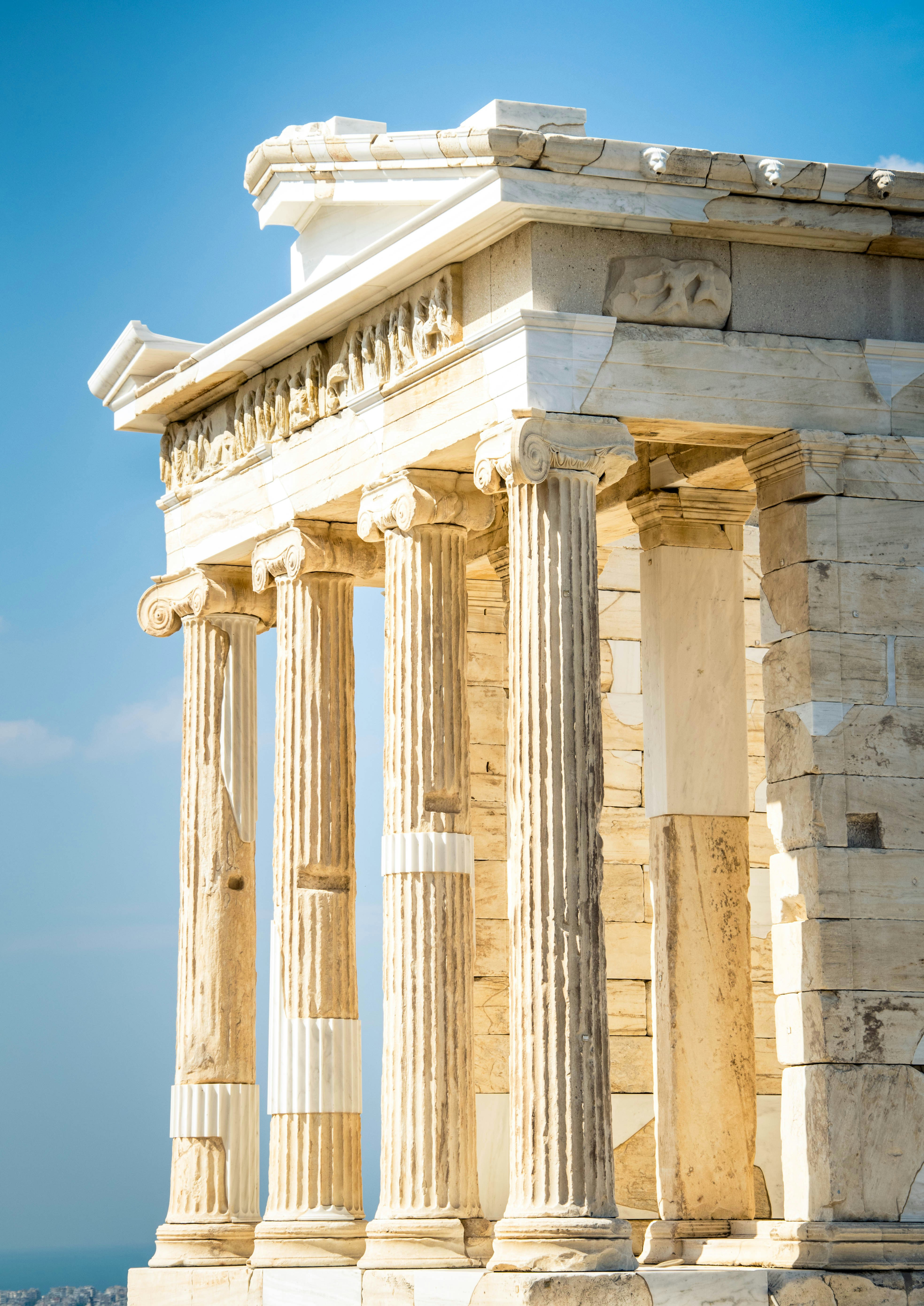Athens 2025 City Guide: Acropolis, Ancient Agora, Food Markets, and a Relaxed 2–4 Day Plan

Athens is more than a gateway to the islands. In 2025, it’s a layered, intensely walkable capital where classical ruins punctuate daily life, where neighborhood markets still set the rhythm, and where a new generation of chefs, roasters, and creatives push the city forward without breaking ties to tradition. This long-form, text-only guide is designed to help you plan a rich but relaxed 2–4 day visit that balances headline antiquities with neighborhoods, food, and simple pleasures—morning coffees under citrus trees, blue-hour walks past marble columns, and the occasional sunset high above the rooftops.
Start by securing cheap flights to Athens early, then choose a base that matches your pace—central and lively for first-timers, or local and leafy for a quieter rhythm. Book headline entries and skip-the-line tickets to top attractions ahead for peak months, and keep compensation for delayed flights handy in case your schedule hits turbulence. If you’re adding a Peloponnese loop or a Saronic Gulf day trip, compare rail, bus, and cheap car rentals in Athens for the best value and freedom to roam. Finally, favor flexible hotels in Athens to stay flexible around weather or strike days.
Where to Stay: Neighborhoods That Define Your Trip
Plaka and Anafiotika: Postcard alleys under the Acropolis
Plaka’s lanes wind beneath the Acropolis, with neoclassical townhouses, bougainvillea, and outdoor tavernas singing late into the evening. Anafiotika, a tiny Cycladic-style hamlet clinging to the rock, is the most photogenic micro-neighborhood in Athens—whitewashed steps, flower pots, cats, the lot. This area delivers the “old Athens” feeling and unbeatable access to the Acropolis and Ancient Agora, but prices and crowds reflect it. If you choose to stay here, book early and request upper-floor rooms for airflow and views.
Syntagma and Kolonaki: Central, smart, and well-connected
Syntagma works for first-timers who want a central transit hub, straight-shot airport access, and walkable distances to major sites. Kolonaki climbs the slopes of Lycabettus with boutiques, galleries, and cardamom-scented cafes; it’s stylish without trying too hard. These neighborhoods suit travelers who like polished hotels, quiet side streets, and a short walk to metro lines that unlock the wider city.
Monastiraki and Psyrri: Markets, maker energy, and nightlife
Monastiraki and Psyrri revolve around flea markets, vintage stalls, street art, and late-night souvlaki. The vibe is lively and creative; you’ll find pocket-size bakeries, meze bars, and vinyl shops alongside busy squares. Stays range from boutique rooftops with Acropolis views to budget rooms above buzzing streets. Light sleepers should request rooms off the square.
Koukaki and Makrygianni: Museum-adjacent calm
South of the Acropolis Museum, Koukaki and Makrygianni feel local and airy, with tree-lined avenues and smart apartments. Families and culture lovers appreciate the easy morning walks to the Acropolis entrance and the return stroll for gelato after sunset. Prices are gentler than Plaka and the evenings quieter, yet you’re steps from the pedestrian spine that links major sights.
Exarchia and Neapoli: Edgy, bookish, and bohemian
Exarchia has long been a cradle of student life, music, and activism; it’s changing, but the bookshops, record stores, and cheap eateries remain. Neapoli, on the slope toward Lycabettus, is calmer and greener. Value is excellent, but expect graffiti, musical evenings, and a rawer feel than Kolonaki next door. Good for travelers who want culture over polish.
Getting Around: Metro Bones, Walkable Heart
Athens rewards walkers, but strategic hops on the metro and trams stretch your energy and time. In 2025, contactless payments and mobile tickets make rides easy, and a shared-bike network fills short gaps. Taxis and ride-hailing are affordable for cross-town journeys, especially at night. From the airport, the blue metro line runs direct to Syntagma and Monastiraki; suburban rail offers an alternative during metro interruptions.
- Airport to center: The blue line metro and suburban rail both connect in ~40 minutes; airport buses operate 24/7 to key squares.
- Acropolis and museum corridor: The pedestrianized Dionysiou Areopagitou unites entrances and offers a beautiful approach—plan early or late visits.
- Coast: Trams glide to the Athens Riviera for sunset swims and easy seaside dinners without renting a car.
- Lycabettus Hill: A funicular shortens the climb; descend on foot for city panoramas and leafy streets.
- Strike awareness: Transit strikes are part of life. Keep flexible plans and a fallback walkable day in your pocket.
- Driving: City driving is not necessary; reserve cheap car rentals in Athens only for Peloponnese, Delphi, or Sounion day trips.
- Heat and pacing: In high summer, sightsee early and late, nap or museum-hop at midday, and hydrate.
- Accessibility: Major sites have improved ramps/lifts; check official notices prior to travel and factor gradients around the Acropolis.
- Tickets: Bundle attractions with skip-the-line tickets to top attractions during peak months to reduce queues and friction.
Essential Sights and Experiences
Acropolis and the Parthenon
The Acropolis is non-negotiable. Book a timed entry, begin at opening, and walk the marble paths in diffuse morning light. Study the Parthenon’s optical refinements from multiple angles, then look outward—Athens unspools to the sea, the domes, the mountains, and the modern grids between. Even repeat visitors find new details in the sculptural fragments and restorations.
Acropolis Museum
Among the world’s best site museums, with glass floors revealing excavations and a top-floor Parthenon Gallery aligned to the temple itself. Combine with an Acropolis visit or use as a heat-safe midday anchor. The café’s terrace views are a bonus; time your break for light and shade.
Ancient Agora and the Temple of Hephaestus
Walk the civic heart where democracy took shape. The Stoa of Attalos houses a clear, elegant museum; the Temple of Hephaestus is the best-preserved Doric temple in Athens. Stroll the olive groves and pause to imagine the square alive with debate, market calls, and students moving between stoas.
National Archaeological Museum
Greece’s treasure-house—gold masks, bronze athletes, fresco fragments, and the Antikythera Mechanism. Give it the time it deserves. A focused route (prehistoric, sculpture, and bronze rooms) is powerful; a second pass for pottery and small finds rewards the curious.
Lycabettus Hill
For sunset panoramas, Lycabettus is classic. If you can, descend on foot through pines into Kolonaki, stopping for an evening drink as the city lights stir on.
Stadiums, Churches, and Layers
The Panathenaic Stadium’s marble sweep anchors athletic history. Byzantine churches like Kapnikarea nestle in modern streets; step inside for flickering gold and cool stone. In Psyrri and Metaxourgio, street art and workshops hint at another Athens—craft, design, and resilient local life.
Food and Markets: Eating the Seasons
Athens eats best when you eat what locals crave: tomato salads and grilled sardines in summer; bean soups, baked greens pies, and slow-cooked lamb in winter. Use markets and bakeries as waypoints, and let meze lead to conversation. Coffee culture runs deep—try freddo espressos in the heat and Greek coffee in the shade.
- Central Municipal Market (Varvakios): Butchers and fishmongers anchor a sensory parade; nearby spice shops, cheese counters, and mezze bars complete the picture. Go early.
- Neighborhood bakeries: Follow the scent: koulouri rings, bougatsa cream pies, spanakopita with bitter-greens bite.
- Meze and ouzo: Order small plates—grilled octopus, fava purée, fried zucchini—and let the table build slowly.
- Modern Greek kitchens: Chefs now riff on island techniques and mountain herbs with finesse. Reserve on weekends.
- Street sweets: Loukoumades (honey puffs) and syrupy galaktoboureko reward an evening wander.
A 2–4 Day Plan: Core Athens Without the Rush
Day 1: Foundations and First Heights
Arrive, drop bags, and orient with a walk around Syntagma, the National Garden, and Plaka’s lanes. Take an early evening ride or walk up Lycabettus for a citywide sunset. Dinner in Kolonaki or Koukaki; sleep early if the Acropolis is on deck.
Day 2: Acropolis + Museum, Slow Afternoon, Old Stones at Dusk
Be at the Acropolis entrance before opening; circle the Parthenon as the sun lifts. Coffee break, then descend to the Acropolis Museum for air-conditioned clarity and a restorative terrace. Siesta or shade-walk through Anafiotika’s white lanes. At dusk, wander the Ancient Agora; dine in Thissio with a temple view.
Day 3: Markets, Byzantine Layers, and Neighborhood Hopping
Start at Varvakios Market, breakfasting on bougatsa nearby. Visit Kapnikarea and smaller Byzantine chapels tucked into modern blocks. Lunch in Psyrri; browse makers’ shops. Choose an afternoon museum (National Archaeological Museum or Benaki). Sunset drinks in Monastiraki with Acropolis views; dinner in Koukaki.
Day 4 (optional): Coast or Hills
Pick a theme: a tram to the Athens Riviera for swims and a seaside taverna; or a hike around Philopappos Hill and Pnyx with sweeping Acropolis angles and park calm. If you have a rental, loop out to Cape Sounion for the Temple of Poseidon and a twilight return to the city.
Optional Day Trips
Cape Sounion
A classic half-day to the Temple of Poseidon, perched over Aegean blues. Golden hour is peerless; bring layers for the breeze.
Delphi
Allow a full day for the navel of the ancient world—terraced sanctuary, theater, and museum. Self-drive gives flexibility; otherwise compare coach tours and early departures.
Nafplio and the Argolid
Peloponnesian elegance by the sea, with Venetian fortresses and gelato lanes. Combine with stops at Epidaurus and Mycenae for theater and Bronze Age heft.
Hydra or Aegina (Saronic Gulf)
Hydra bans cars and rewards walkers with stone mansions and harbor life; Aegina mixes temple ruins with pistachio orchards. Ferries run often; check winds and schedules.
Safety, Etiquette, Money, Seasonality
Safety
Athens is generally safe in central areas. Use normal city savvy—watch bags on the metro, especially around Omonia and Monastiraki, and avoid poorly lit streets late at night. Heat is a real factor in July–August; treat midday like siesta time.
Etiquette
Greet with a friendly “Yasou,” and don’t rush restaurant tables—lingering is normal. In churches, dress modestly and keep voices low. On pedestrian streets, mind scooters and delivery bikes.
Money
Cards are widely accepted, but small coins smooth bakery stops and markets. Tips are modest—round up or leave small change. Keep a backup card for ATMs.
Seasonality
- Spring (Mar–May): Wildflowers in parks, softer light, perfect walking temps. Book key sights on weekends.
- Summer (Jun–Aug): High heat, longer hours, and crowded peaks. Start early, book shade-friendly lunches, and consider a coastal afternoon.
- Autumn (Sep–Oct): Warm seas, golden evenings, and calmer queues. This is a sweet spot for a balanced city+coast trip.
- Winter (Nov–Feb): Moody skies, museum days, and cozy tavernas. Hotels are cheaper; pack layers and enjoy quiet ruins.
- Holidays/strikes: Check schedules in advance and keep compensation for delayed flights in mind for disruptions.
- 2025 ticketing: Reserve timed entries for the Acropolis and popular museums; use skip-the-line tickets to top attractions to reduce lines.
Booking and Timing for 2025+
Plan Athens as you would any classic capital: anchor your dates with cheap flights to Athens, then book flexible hotels in Athens that can flex a day or two around weather or transit changes. Reserve headline sights a week or two out in shoulder seasons and much earlier in summer. If your plans are tight, group outdoor ruins early or late in the day and slot museum visits in the heat. For day trips, compare guided options to self-drive cheap car rentals in Athens; the latter unlocks scenic stops and seaside tavernas.
The Bottom Line
Athens rewards the curious and the unhurried. Climb to the Parthenon at opening, but also wander the orange-scented lanes of Plaka, linger over meze in Psyrri, and watch the city blush from a rooftop as the lights come on. With a smart base, a realistic 2–4 day plan, and a willingness to trade a few checklists for lived moments, you’ll find an ancient capital that still feels delightfully alive. Book cheap flights to Athens, keep compensation for delayed flights in your back pocket, and let Athens do what it does best: reveal itself, slowly, at human speed.


